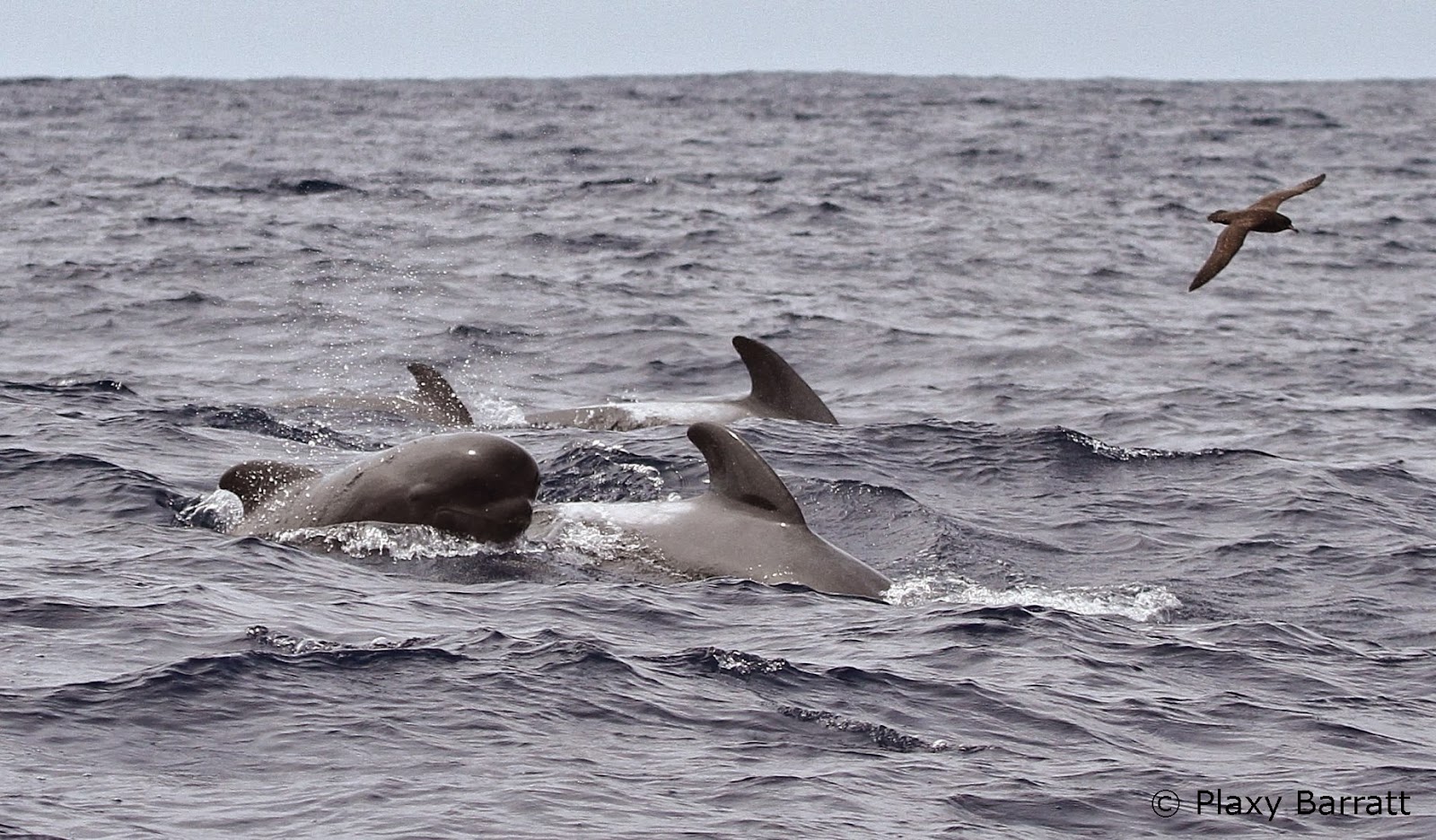| Arctic Tern. Photo courtesy Dan Mantle. |
Tuesday, July 28, 2015
Albany Pelagic Trip Report - 24 May 2015
Summary: A second good trip for the weekend, again with 13 tubenose species recorded, though the species mix varied a little from the Saturday trip. The highlights included an Arctic Tern, several Black-bellied Storm-Petrels, and a brief visit by a small group of Orcas.
Albany Pelagic Trip Report - 23 May 2015
Summary: This was a good trip, with a good variety of seabirds seen (including 13 tubenose species). However, we didn't see anything different as a result of travelling further offshore to deeper water. The highlights were at least one South Polar Skua, an intermediate-type Soft-plumaged Petrel, better-than-usual views of a number of Little Shearwater, several Wandering-type Albatross, and a pair of Sperm Whales.
Sunday, May 17, 2015
Cheynes Beach: Twitching in a skulkers paradise
Cheynes Beach is a superb birding location, best known for its opportunities to encounter the ‘Big Three’ endemic skulkers of the south-west: Noisy Scrub-bird, Western Bristlebird, and nominate race Western Whipbird. Prime target for most birders is the scrub-bird, which is generally a little easier to see here than at nearby Two Peoples Bay, as the birds here are more habituated to humans (note that’s easIER, not easy). However there are many other treats hidden in the scenic, botanically-rich heaths, and nature-lovers shouldn’t leave disappointed even if they don’t manage to glimpse one or more of the famous skulkers - which is certainly a possibility!
 |
| The track to Back Beach (Loop Track), with Baxter's Banksia (Banksia baxteri). NSB habitat to the left (dense cover and reeds), bristlebird habitat to the right (long-burnt low open heath). |
Friday, February 20, 2015
Albany Pelagic Trip Report - 8 February 2015
Summary: This was also an interesting trip, with a reasonable variety of seabirds, though most species were the same as the previous day’s trip. 11 tubenose species were recorded, along with several skua and tern species. The highlights were more Sooty Terns and Short-tailed Shearwaters, and several close passes from a Wandering-type Albatross.
 |
| Wandering-type Albatross, suspected Gibson’s D. [e.] [antipodensis] gibsoni. Photo courtesy Plaxy Barratt. |
Albany Pelagic Trip Report - 7 February 2015
Summary: This was the first trip run off Albany in February (or any summer month, for that matter) so it was difficult to know what to expect. It turned out to be an interesting trip, with a reasonable variety of seabirds. 9-10 tubenose species were recorded, along with several skua and tern species. The highlights were close views of a large pod of Pilot Whales around the boat, and records of Sooty Tern, Long-tailed Jaeger, and Short-tailed Shearwater. The latter two were not unexpected at this time of year, but both represent the second records of the species for Albany pelagics. The Sooty Terns were more unexpected, and appear to represent the first records of the species off the south coast of WA.
Saturday, January 31, 2015
New almost-endemic species for WA: Western Whistler
Subscribe to:
Posts (Atom)


Robyn%2BPickering.jpg)